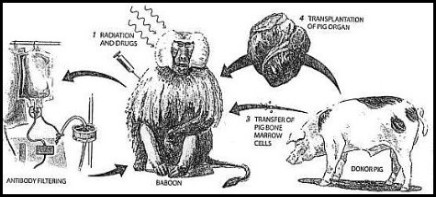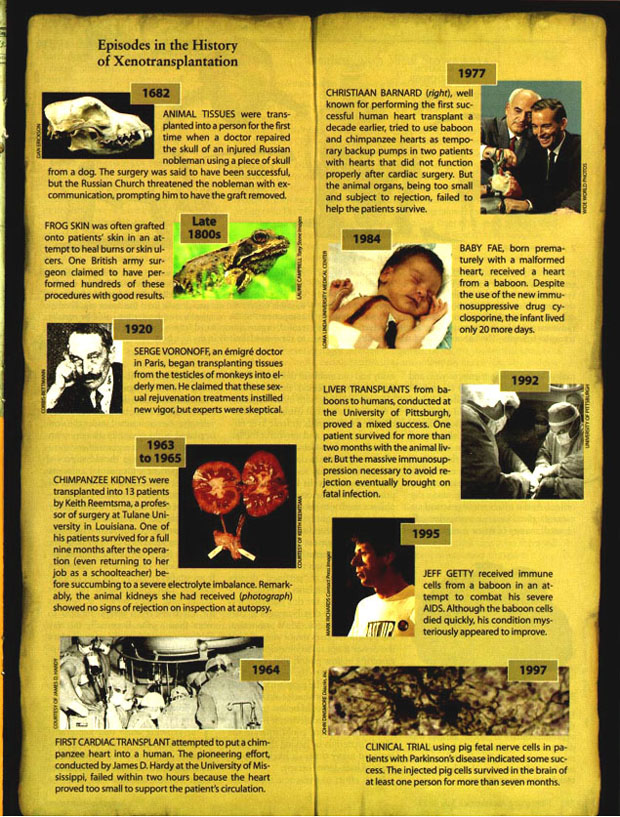What animals should be used for Xenotransplants? The pig is currently regarded as the most suitable source of organs for future xenotransplantation into man. - Species is anatomically/physically similar to man. - Short gestation period, 115 days, and produces large litters of 10 or more that grow rapidly to the necessary size. - Can be easily bred under pathogen-free conditions, to remove infectious agents. -Animal is widely used for food. About 90 million pigs are slaughtered each year in the U.S. to provide meat and other products. This means that the pig carrries fewer ethical objections than the use of primates. |
Brief History The first surgeon to complete this animal-to-human transplant was Dr. James D. Hardy. After completing the first human lung transplant in 1693, he made the first heart transplant a year later in 1964 at the University of Mississippi. Possibly the most famous case of cross-species transplantation is the heart of a baboon given to Baby Fae in 1984, performed by Dr. Leonard Baily from Loma Linda University in California. However, Baby Fae only lived for 20 days after the operation
Dr. Keith Reemtsma was the first to show that nonhuman organs could be transplanted to humans for a period of time. He gave chimpanzee kidneys to 5 patients in 1963. The recipients died of infection from 8 to 63 days after the surgery. In 1964, Reemtsma gave transplanted another kidney, this time, to a 23-year-old teacher, who lived for 9 months until succumbing to an infection (1) . |
|
|
||


